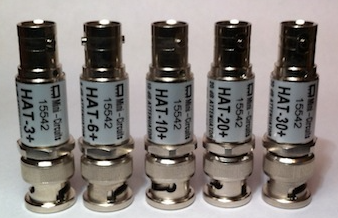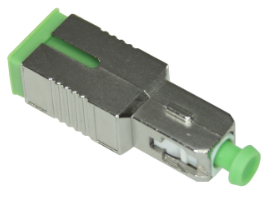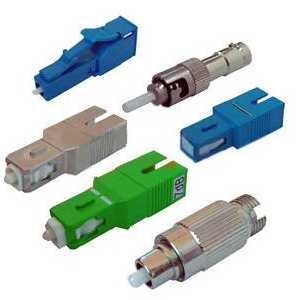What Is Fiber Optic Attenuator:Working,Types,How to choose?
This is a post about Understanding Fiber Optic Attenuators: A Comprehensive Guide for Enthusiasts
As a seasoned remodeling expert with a passion for electronics, I've encountered countless situations where controlling the intensity of electrical signals is crucial. Attenuators, both electrical and fiber optic, play a vital role in this regard. In this article, I'll delve into the world of fiber optic attenuators, providing you with a comprehensive understanding of their function, types, and selection process.
What is an Attenuator?
An attenuator is an electronic component designed to reduce the amplitude of an electrical signal. It's like a volume knob for electrical signals, allowing you to adjust the intensity without distorting the waveform. Attenuators are used in various applications, including signal conditioning, impedance matching, and power level control.
Attenuator Circuit
An attenuator circuit typically consists of a series of resistors arranged in a voltage divider configuration. The input signal is applied to one end of the resistor chain, and the output signal is taken from the other end. By varying the resistance values, the amount of attenuation can be controlled.
Attenuator Pinout
The pinout of an attenuator depends on its type and application. However, most attenuators have three terminals: input, output, and ground. The input terminal receives the signal that needs to be attenuated, the output terminal provides the attenuated signal, and the ground terminal is connected to the system ground to minimize noise and interference.
Attenuator Types

1. Fixed Value Attenuators: These attenuators have a fixed attenuation value, such as 3 dB, 6 dB, 10 dB, etc. They provide a constant level of attenuation and are commonly used in various applications where a consistent signal reduction is required.
2. Variable Attenuators: These attenuators allow for adjustable attenuation levels. They can be continuously adjustable or have discrete attenuation steps. Variable attenuators provide flexibility in controlling the signal level according to specific requirements.
3. T-Pad Attenuators: T-pad attenuators are a type of pad attenuator that uses a T-shaped network of resistors to achieve the desired attenuation. They provide good impedance matching and are commonly used in audio applications.
4. Pi Attenuators: Pi attenuators, also known as balanced pad attenuators, use a network of resistors in a pi-shaped configuration to attenuate the signal. They offer good matching characteristics and are often used in RF and microwave applications.
5. L-Pad Attenuators: L-pad attenuators, also called H-pad attenuators, consist of a series and shunt resistor configuration in the shape of an "L." They are commonly used in audio systems to control the volume level.
6. Step Attenuators: Step attenuators provide discrete attenuation steps that can be selected by the user. They are commonly used in test and measurement setups where precise control over the attenuation level is required.
7. Digital Attenuators: Digital attenuators use digital control signals to adjust the attenuation level. They are often used in communication systems, such as wireless networks, where remote control or automated adjustment is desired.
8. RF/Microwave Attenuators: These attenuators are specifically designed to handle high-frequency signals in the RF and microwave frequency ranges. They are capable of maintaining signal integrity while reducing the power level.
Attenuators come in various types, each with its own characteristics and applications:
- **Fixed Attenuators:** Provide a constant level of attenuation, regardless of the input signal level.
- **Variable Attenuators:** Allow for manual or electronic adjustment of the attenuation level.
- **Programmable Attenuators:** Can be controlled remotely via digital or analog signals, enabling precise and dynamic attenuation control.
Attenuator Applications
Attenuators are used in a wide range of applications, including:
- Signal conditioning: Reducing the amplitude of high-level signals to prevent damage to sensitive equipment.
- Impedance matching: Matching the impedance of a signal source to the impedance of the load to minimize signal reflections.
- Power level control: Adjusting the power level of a signal to meet specific requirements.
Classification Of Attenuators
Attenuators can be classified based on their frequency response:
- **Broadband Attenuators:** Operate over a wide range of frequencies with minimal variation in attenuation.
- **Narrowband Attenuators:** Designed to attenuate signals within a specific frequency range.
1. Based on Attenuation Type:
- Voltage Attenuators: These attenuators are designed to reduce the amplitude of voltage signals while maintaining impedance characteristics.
- Power Attenuators: These attenuators are specifically designed to handle high-power signals, such as RF or microwave signals.
- Crash Attenuator: Crash attenuators are safety devices used on roads and highways to absorb the impact energy during vehicular collisions.
2. Based on Configuration:
- Fixed Attenuators: These attenuators provide a fixed level of attenuation and cannot be adjusted. They are designed to provide a constant attenuation value.
- Variable Attenuators: These attenuators allow the user to adjust the attenuation level according to their requirements. Variable attenuators can be continuously adjustable or have discrete attenuation steps.
- Guitar Amp Attenuator: Guitar amp attenuators are devices used in guitar amplification systems to reduce the volume or power output of the amplifier while maintaining the tone and characteristics of the guitar's sound.
- Truck Mounted Attenuator: A truck-mounted attenuator (TMA) is a safety device installed on the rear of a truck or vehicle used in construction or maintenance work zones.
3. Based on Attenuation Range:
- Step Attenuators: These attenuators have discrete attenuation steps that can be selected by the user. They provide precise control over the attenuation level.
- Continuously Variable Attenuators: These attenuators allow for continuous adjustment of the attenuation level within a specified range. They provide flexibility in selecting the desired attenuation value.
- RF Attenuator: An RF attenuator is a device used in radio frequency (RF) and microwave systems to attenuate or reduce the power level of the RF signal.
4. Based on Impedance Matching:
- Pad Attenuators: These attenuators use a simple resistive network to reduce the signal level. They are cost-effective solutions but may not provide optimal impedance matching.
- T-Type Attenuators: These attenuators use a network of resistors in a T-shaped configuration to achieve the desired attenuation. T-type attenuators provide better impedance matching compared to pad attenuators.
- Traffic Attenuator: Traffic attenuators, also known as highway attenuators or impact attenuators, are safety devices used in traffic management to absorb and redirect the impact energy of a vehicle during collisions.
5. Based on Frequency Range:
- RF Attenuators: These attenuators are specifically designed for radio frequency (RF) applications, typically up to several gigahertz.
- Microwave Attenuators: These attenuators are designed to handle microwave signals, typically in the frequency range of several gigahertz to several terahertz.
Attenuator Vs Attenuation
Attenuator and attenuation are often used interchangeably, but there's a subtle difference. Attenuator refers to the physical component that reduces the signal amplitude, while attenuation measures the amount of signal reduction in decibels (dB).
How Do I Choose The Right Attenuator?

Selecting the right attenuator for your application requires considering the following factors:
- Attenuation Level: Determine the desired amount of signal reduction in dB.
- Frequency Range: Ensure the attenuator covers the frequency range of the signal you need to attenuate.
- Impedance: Match the impedance of the attenuator to the impedance of the signal source and load.
- Power Handling Capacity: Consider the maximum power level the attenuator can handle without damage.
What Is Fiber Optic Attenuator?
A fiber optic attenuator is a specialized type of attenuator designed to reduce the intensity of light signals in optical fibers. It's used in fiber optic communication systems to adjust the power level of optical signals, ensuring optimal performance and preventing damage to sensitive equipment.
What Are The Types Of Attenuation Losses In Optical Fibers?
Attenuation in optical fibers can occur due to various factors, including:
- Intrinsic Attenuation: Caused by the inherent absorption and scattering of light in the fiber material.
- Extrinsic Attenuation: Resulting from external factors such as fiber bending, splicing, and connectors.
How Does Fiber Optic Attenuator Work?

Fiber optic attenuators typically use a combination of absorption and scattering mechanisms to reduce the intensity of light signals. They can be implemented using various techniques, including:
- Fixed Attenuators: Use a fixed amount of absorbing or scattering material to provide a constant level of attenuation.
- Variable Attenuators: Allow for manual or electronic adjustment of the attenuation level using moving optical elements.
- Inline Attenuators: Installed directly into the fiber optic cable, providing a convenient and non-invasive way to control signal power.
Conclusion
Attenuators, both electrical and fiber optic, play a crucial role in controlling the intensity of electrical and optical signals. By understanding their function, types, and selection criteria, you can effectively utilize attenuators in your electronic and fiber optic projects. Remember, choosing the right attenuator for your application is essential for achieving optimal performance and preventing damage to sensitive equipment.

Frequently Asked Questions


















